#ryan fleming photography
Explore tagged Tumblr posts
Text
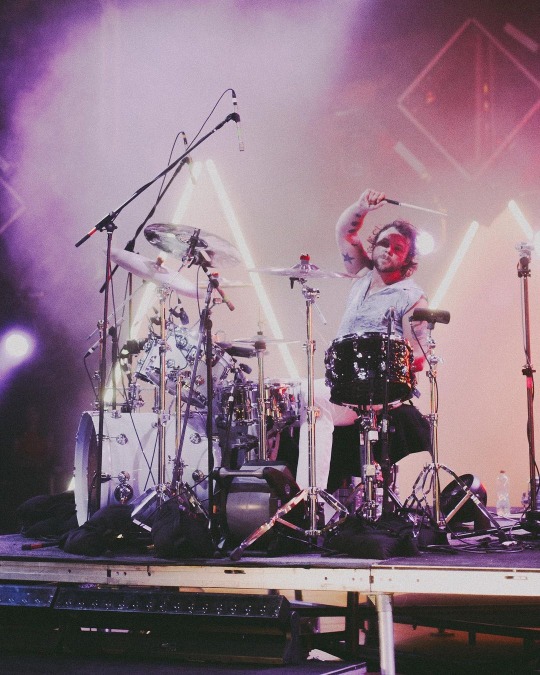
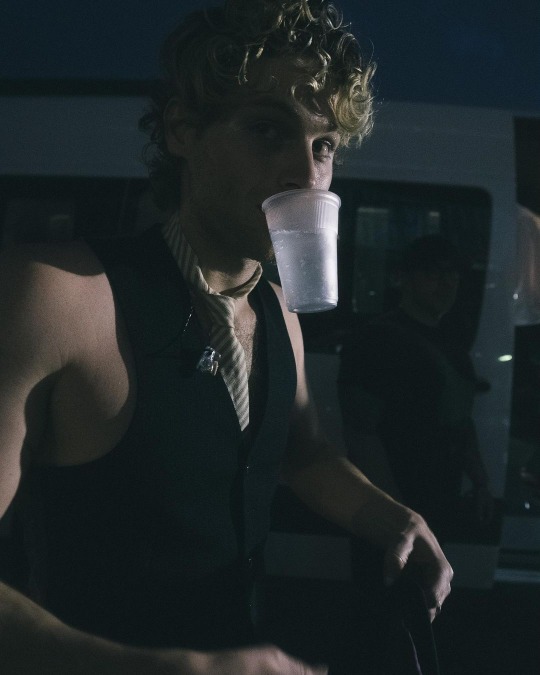
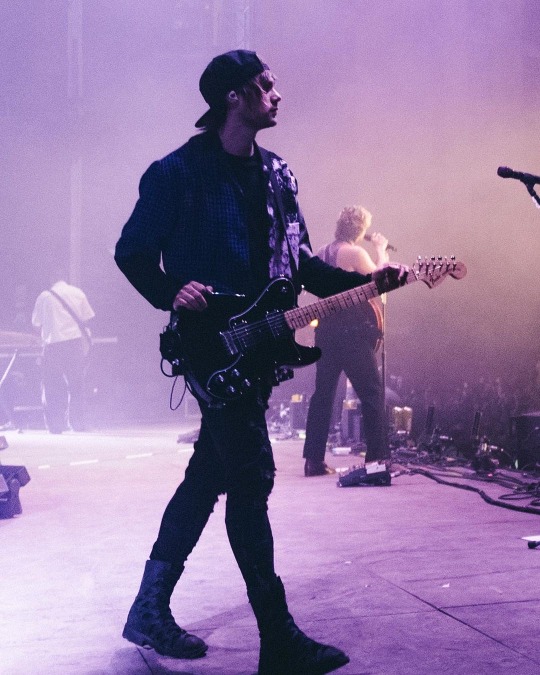

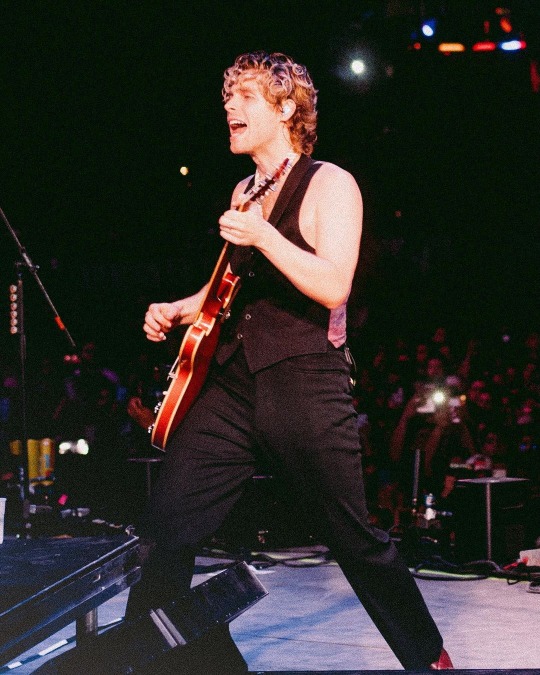
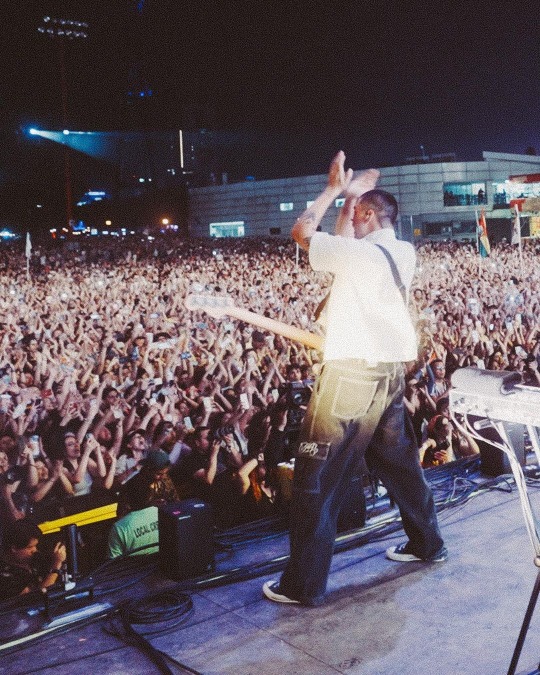
#ashton irwin#luke hemmings#michael clifford#calum hood#5sos#instagram#tecate pal norte#concert photography#stage photography#ryan fleming photography
14 notes
·
View notes
Text
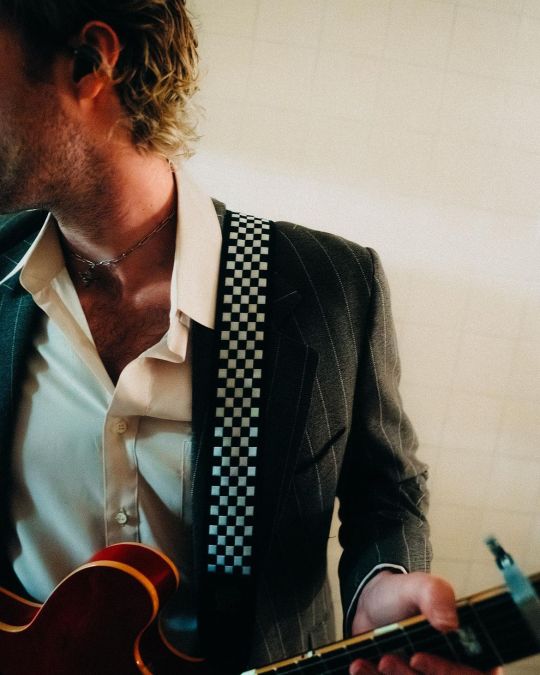
📸: Ryan Fleming
#ok listen. we all know I'm Going Thru Something when it comes to this man. so. this is. i am. i just think that. *dies*#5sos#5 seconds of summer#luke hemmings#luke#the 5sos show tour lisbon#ryan fleming 2023#Instagram#band ig#kh4f post#i just. feel so unhinged sometimes in such brand new ways it surprises even ME#🧛🏻♀️#like#WHAT AM I MEANT TO DO WITH THIS INFORMATION#DO U SEE THAT CHEST HAIR#THE COLLARBONE#IT'S JUTTING#DO YOU ZEE THE JUTTING COLLARBONE#AND I'M JUST SUPPOSED TO SIT HERE AND FINISH THE EMAIL I WAS IN THE MIDDLE OF WRITING??#FITTINGLY IT WAS TO MY THERAPIST SO ACTUALLY MAYBE THAT WORKS OUT 😩😩😩😩😩😩😩#that necklace jfc i am. i am fine. don't worry about it I'm actually doing great thanks#and the beard#i'm 🤸🏻♀️ doing 🤸🏻♀️ okay 🤸🏻♀️#THIS IS CERTAINLY PHOTOGRAPHY#GONNA LEAVE NOW THINKING ABOUT HOW MUCH I LOVE AND APPRECIATE VISUAL MEDIA#the 5sos show tour
190 notes
·
View notes
Text
An urgent phone call pulls a Yale Law student back to his Ohio hometown, where he reflects on three generations of family history and his own future. Credits: TheMovieDb. Film Cast: J.D. Vance: Gabriel Basso Beverly “Bev” Vance: Amy Adams Bonnie “Mamaw” Vance: Glenn Close Lindsay Vance: Haley Bennett Usha Chilukuri: Freida Pinto Papaw: Bo Hopkins Young J.D. Vance: Owen Asztalos Matt: Jesse C. Boyd Phillip Roseman: Stephen Kunken Ken: Keong Sim Travis: Morgan Gao Chris: Ethan Suess Kevin: Jono Mitchell Uncle Pat: Bill Kelly Uncle Arch: David Dwyer Lori: Sarah Hudson Jimmy (Bev’s Brother): Ted Huckabee Bill (Nurse): Nathan Hesse Cousin Nate: Max Barrow Bonnie (Mamaw, 30’s): Sunny Mabrey Jim (Papaw, 30’s): Brett Lorenzini Young Bev (6 years): Tierney Smith Cheryl: Helen LeRoy Emma: Kinsley Isla Dillon Adult Frank McFee: Ryan Homchick Chip: Joshua Stenvick Brooks Houghton: Bill Winkler Brett: Chase Anderson Pamela: Amy Parrish Rich: Ed Amatrudo Hiram Walcott: David de Vries Cocktailer #1: Holly Morris Cocktailer #2: Brandon Hirsch Server: David Alexander Obsequious Server: Alexander Baxter Waiter: Steven Reddington Wiry Law Partner: Angelo Reyes Stodgy Partner: John Rymer Young Bonnie (Mamaw 13 Years): Abigail Rose Cornell Adult Louis Zablocki: Lowrey Brown Young J.D. (4 years): Hunter James Evers Dane: Riley McNerney Pool Woman: Zele Avradopoulos Mr. Selby: David Jensen Holler Aunt: Skylar Denney Young Louis: John Whitley Doug: Zac Pullam Young Frank: Shane Donovan Lewis Officer #1: Mike Senior Officer #2: William Mark McCullough Kameron: Dylan Gage Katrina: Hannah Pniewski Doctor: David Marshall Silverman Dr. Newton: Jason Davis Davis: Joshua Brady Nasty Cashier: Cory Chapman Nurse: Tatom Pender Patient: Cathy Hope Ray: David Atkinson Salesperson: Adam Murray Scared Woman: Dianna Craig Meghan: Emery Mae Edgeman Young Jim (Papaw 16 Years): Rohan Myers Meals On Wheels Delivery Man: Matthew Alan Brady Young Lori (6 years): Lucy Capri Sally Coates: Déjá Dee Kyle: Daniel R. Hill Arguing Girlfriend: Jordan Trovillion Secretary at Club: Yossie Mulyadi ICU Nurse #1: Alisa Harris ICU Nurse #2: Tiger Dawn Rehab Mother: Darla Robinson Rehab Recepcionist: Belinda Keller Old Mamaw Blanton: Jessie Faye Shirley Nurse Vivian: Cheryl Howard Law Candidate Tim: Tim Abou-Nasr Curt: Leland Thomas Griffin Officer Connor: Drew Emerson Jones EMT #1: Justin P. Turner EMT #2: Joshua T. Schneider Marine Barber: Tony Ward Dining Hall Manager: Mara Hall Jill at Financial Aid Office: Tess Malis Kincaid Gas Station Attendant: Chris Charm Intake Receptionist: Mary Kraft Shoe Store Manager: Suehyla El-Attar Study Hall Friend #1: Matthew Withers Study Hall Friend #2: Jessica Miesel Study Hall Friend #3: Benjamin Rapsas Peter (uncredited): Ethan Levy Middletown Resident (uncredited): Bret Aaron Knower Film Crew: Original Music Composer: Hans Zimmer Producer: Brian Grazer Producer: Ron Howard Post Producer: William M. Connor Executive Producer: Diana Pokorny Production Design: Molly Hughes Sound Re-Recording Mixer: Robert Hein Director of Photography: Maryse Alberti Casting: Carmen Cuba Producer: Karen Lunder Stunt Coordinator: Monique Ganderton Writer: Vanessa Taylor Compositing Artist: Daniel L. Smith Camera Operator: Thomas Lappin Compositing Artist: Michael A. Martinez Supervising Art Director: Gregory A. Weimerskirch Costume Designer: Virginia B. Johnson Set Costumer: Bob Moore Jr. Makeup Department Head: Eryn Krueger Mekash Foley Artist: Heikki Kossi Art Direction: Shawn D. Bronson Rigging Grip: Gary Blair Makeup Artist: Erica Stewart Sound Re-Recording Mixer: Josh Berger Compositing Artist: Steve Dinozzi VFX Artist: Bryan Haines Visual Effects Producer: Chris LeDoux Original Music Composer: David Fleming Set Dresser: Aaron Robert Hall Assistant Art Director: Chris Yoo Costume Supervisor: Dana Pacheco Sound Designer: Grant Elder Makeup Artist: Jodi Byrne Set Costumer: Robin Fields Compositing Artist: Brad Lucas Set Dresser: Sam Carter Makeup Artist: Andrea Vieth Set Dresser: Maxfield Ladish Set Dresser: Natalie LeCompte Rigging ...
#1990s#american dream#appalachian#appalachian mountains#based on memoir or autobiography#based on novel or book#child abuse#childhood memory#drug addiction#drug rehabilitation#grandmother#heroin#hillbilly#kentucky#law student#mother son estrangement#mother son relationship#ohio#overdose#single mother#small town life#teenage boy#Top Rated Movies#traditional family#yale university
0 notes
Text
IF (2024)
Director: John Krasinski Starring: Cailey Fleming, Ryan Reynolds, John Krasinski A young girl who goes through a difficult experience begins to see everyone’s imaginary friends who have been left behind as their real-life friends have grown up. Let me start off by saying how beautifully filmed this movie is. The cinematography is beautiful and the photography is crisp, clear and colourful. I…

View On WordPress
0 notes
Video
vimeo
Route 94 - My Love ft. Jess Glynne (Director's Cut) from Pomp&Clout on Vimeo.
Shot entirely on FLIR Thermal Camera.
Directed by Ryan Staake
Producer UK: Sarah-Jane Boardman Producer US: Laure Salgon Production Coordinator: Lisiane Igoulen Assistant Director: Rachel Gunderson Production Companies: Paradoxal & Riff Raff Director of Photography: Adam Donald 1st Assistant Camera: Real Sprague 2nd Assistant Camera: Miles Soboleski DIT: Matt Greenberg Art Designer/Wardrobe: Kelly Thomas On-set Art Coordinator: Agatha Aggy Key PA: Rob Morales Set PA: Justin Khan Art PA: Claire Duport Post Production: Pomp&Clout Editor: Ryan Staake Thermal Camera: FLIR
Lead Actor: Jon Fleming Lead Actress: Lorena Vogue
Extras: Elizabeth Yusuff, James White, Thomas Keelan, London Zhiloh, Raheem Rogers, Jerrod Ulysee, Suzie Felton, Jigz, Andrew Neal, Taylor Lashae, Difenni Shi, Tiffany Clark, Maxime Menant, Rachel Zeiger, Aaron Vinton, Lindsey Dean, Akoma M'Ba, Léa Caruelle, Sabrina Pacheco, Caroline Huber & Lara.
0 notes
Text

Ryan Fleming by Rosmary de Jesús
Posted with artist's permission. Please do not repost.
#ryan fleming#5sos#5 seconds of summer#calum hood#ashton irwin#luke hemmings#michael clifford#tour photography#band photographer#5sos fan art#illustration#5sos cartoon#rosmary de jesús#de jesús#2022
45 notes
·
View notes
Photo

#5sos#5 seconds of summer#michael clifford#ryan fleming#tour#concert#concert photography#on stage#front row#take my hand tour#5sos hq#michael clifford hq#5sos michael
35 notes
·
View notes
Text
April 12, 2022
Ash posted a pic band photographer Ryan Fleming took of him to his ig story


#5sos#5 seconds of summer#ashton irwin#ashton 5sos#ashton ig story#ryan fleming#april 12#2022#band photography#take my hand tour#take my hand#tmh tour
2 notes
·
View notes
Photo


The Horsehead Nebula: also known as Barnard 33, this nebula is located over 1000-Lights Years away in the constellation of Orion. It was first discovered by female Scottish astronomer Williamina Fleming in 1888. Original photography by Ryan Steinberg, Adam Block et al.
#the horsehead nebula#Barnard 33#Orion#space#nebula#star#astronomy#the really bright stars are part of Orion's Belt#space is cool#female astronomers are cool#especially in 1888#good for her! for discovering what is probably the most famous nebula
63 notes
·
View notes
Text
Favourite films watched in 2019
I arranged them into broad categories – other than that they’re in no particular order.
Indie
Skate Kitchen (Crystal Moselle, 2018) 6 Balloons (Marja-Lewis Ryan, 2018) The Party’s Just Beginning (Karen Gillan, 2018) Thirteen (Catherine Hardwicke, 2003) Baise-moi (Virginie Despentes and Coralie Trinh Thi, 2000) Vazante (Daniela Thomas, 2017) Erasing Eden (Beth Dewey, 2016) The Seen and the Unseen (Sekala Niskala, Kamila Andini, 2017) Knock Down Ginger (Cleo Samoles-Little, 2016) The Garden (Sommerhaüser, Sonja Maria Kröner, 2017) Marlina the Murderer in Four Acts (Marlina Si Pembunuh dalam Empat Babak, Mouly Surya, 2017) Fish Tank (Andrea Arnold, 2009) Soldiers. Story From Ferentari (Soldații. Poveste din Ferentari, Ivana Mladenović, 2017)
Comedy
Dick (Andrew Fleming, 1999) The Breaker Upperers (Madeleine Sami and Jackie Van Beek, 2018) It Stains the Sands Red (Colin Minihan, 2016) Satanic Panic (Chelsea Stardust, 2019)
Classics
Wanda (Barbara Loden, 1970) House of Wax (Andre DeToth, 1953) Eve's Bayou (Kasi Lemmons, 1997) Germany Pale Mother (Deutschland bleiche Mutter, Helma Sanders-Brahms, 1980)
Horror
April and the Devil (Jake Hammond, 2018) Blackwood (Andrew Montague, 2019) The Crescent (Seth A Smith, 2017) Us (Jordan Peele, 2019) American Mary (Jen and Sylvia Soska, 2012) Midsommar (Ari Aster, 2019) Black Christmas (Bob Clark, 1974) The Devil's Passenger (Dave Bundtzen, 2018)
Science fiction
Born in Flames (Lizzie Borden, 1983) Evolution (Lucile Hadžihalilović, 2015) In Full Bloom (Maegan Houang, 2019)
Action
Destroyer (Karyn Kusama, 2018) Under the Silver Lake (David Robert Mitchell, 2018) Snatch (Guy Ritchie, 2000) Holiday (Isabella Eklöf, 2018)
Documentary
Our Daily Bread (Unser täglich Brot, Nikolaus Geyrhalter, 2005) Abducted in Plain Sight (Skye Borgman, 2017) Jane Fonda in Five Acts (Susan Lacy, 2018) Stories We Tell (Sarah Polley, 2012) The Decline of Western Civilization series (Penelope Spheeris, 1981, 1988 and 1998)
Full list of 273 films watched in 2018 under the cut!
January
Like Father (Lauren Miller Rogen, 2018)
Upgrade (Leigh Whannell, 2018)
Skate Kitchen (Crystal Moselle, 2018)
Never Been Kissed (Raja Gosnell, 1999)
Anomalisa (Charlie Kaufman and Duke Johnson, 2015)
Dick (Andrew Fleming, 1999)
The Black Balloon (Elissa Down, 2008)
Under the Silver Lake (David Robert Mitchell, 2018)
6 Balloons (Marja-Lewis Ryan, 2018)
Rosy (Jess Bond, 2018)
The Party’s Just Beginning (Karen Gillan, 2018)
The Rider (Chloé Zhao, 2017)
Snowpiercer (Bong Joon-ho, 2013)
Touch of Evil (Orson Welles, 1958)
Thirteen (Catherine Hardwicke, 2003)
Sadie (Megan Griffiths, 2018)
The Miseducation of Cameron Post (Desiree Akhavan, 2018)
Frida (Julie Taymor, 2002)
Fyre: The Greatest Pary That Never Happened (Chris Smith, 2019)
Time Share (Tiempo Compartido, Sebastián Hofmann, 2018)
The Stranger (Orson Welles, 1946)
Abducted in Plain Sight (Skye Borgman, 2017)
King of Thieves (James Marsh, 2018)
Malevolent (Olaf de Fleur, 2018)
Serena (Susanne Bier, 2014)
Baise-moi (Virginie Despentes and Coralie Trinh Thi, 2000)
And Breathe Normally (Andið Eðlilega, Ísold Uggadóttir, 2018)
Catwalk: Tales from the Cat Show Circuit (Aaron Hancox and Michael McNamara, 2018)
Santoalla (Andrew Becker and Daniel Mehrer, 2016)
Jane Fonda in Five Acts (Susan Lacy, 2018)
Mademoiselle Paradis (Licht, Barbara Albert, 2017)
The B-Side: Elsa Dorfman’s Portrait Photography (Errol Morris, 2016)
February
Matangi/Maya/M.I.A (Steve Loveridge, 2018)
Pride & Prejudice (Joe Wright, 2005)T
The Brain Hack (Joseph White, 2014)
Vazante (Daniela Thomas, 2017)
Tanglewood (Jordan Prosser, 2016)
Outfall (Suzi Ewing, 2018)
Pigskin (Jake Hammond, 2015)
The Funspot (Jake Hammond, 2015)
April and the Devil (Jake Hammond, 2018)
Smithereens (Susan Seidelman, 1982)
Can You Ever Forgive Me? (Marielle Heller, 2018)
Bus Stop (Joshua Logan, 1956)
Pink Plastic Flamingos (Colin West, 2017)
The Breaker Upperers (Madeleine Sami and Jackie Van Beek, 2018)
Amanda Knox (Rod Blackhurst and Brian McGinn, 2016)
Holy Hell (Will Allen, 2016)
Shoplifters (Manbiki Kazoku, Hirokazu Kore-eda, 2018)
Skin (Jordana Spiro, 2015)
A Night at the Garden (Marshall Curry, 2017)
Give Up the Ghost (Nathan Sam Long, 2018)
Last One Screaming (Matt Devino, 2017)
The Katy Universe (Patrick Muhlberger, 2018)
Roma (Alfonso Cuarón, 2018)
Did You Hear About the Morgans? (Marc Lawrence, 2009)
End Game (Rob Epstein and Jeffrey Friedman, 2018)
Behind the Curve (Daniel J. Clark, 2018)
Our Daily Bread (Unser täglich Brot, Nikolaus Geyrhalter, 2005)
92MARS (Ricardo Bernardini, 2018)
Construct (Kevin Margo, 2018)
Invaders (Daniel Prince, 2018)
March
Three Identical Strangers (Tim Wardle, 2018)
Dirty John: The Dirty Truth (Sara Mast, 2019)
Blackwood (Andrew Montague, 2019)
One (Luke Bradford, 2019)
God's Kingdom (Guy Soulsby, 2018)
Holiday (Isabella Eklöf, 2018)
Frigid (Joe Kicak, 2016)
Girl of the Sky (Ariel Martin, 2017)
Monitor (Matt Black and Ryan Polly, 2018)
Donoma (Evan Spencer Brace, 2018)
Perfect Blue (パーフェクトブル, Pāfekuto Burū, Satoshi Kon, 1997)
The Sermon (Dean Puckett, 2018)
Layer Cake (Matthew Vaughn, 2004)
Easy A (Will Gluck, 2010)
Generation Wealth (Lauren Greenfield, 2018)
The Rachel Divide (Laura Brownson, 2018)
The Place Beyond the Pines (Derek Cianfrance, 2012)
Burden (Timothy Marrinan and Richard Dewey, 2016)
What Will People Say (Hva vil folk si, Iram Haq, 2017)
Close Encounters of the Third Kind (Steven Spielberg, 1977)
Dear Zachary: A Letter to a Son About His Father (Kurt Kuenne, 2008)
Animal (Fabrice Le Nézet and Jules Janaud, 2017)
Capturing the Friedmans (Andrew Karecki, 2003)
The Fog of War: Eleven Lessons from the Life of Robert S. McNamara (Errol Morris, 2003)
April
Erasing Eden (Beth Dewey, 2016)
Destroyer (Karyn Kusama, 2018)
Unicorn Store (Brie Larson, 2019)
May the Devil Take You (Sebelum iblis menjemput, Timo Tjahjanto, 2018)
People in Cars (Daniel Lundh, 2017)
Presentation (Danielle Kampf, 2017)
Ink (Jamin Winans, 2009)
Hedgehog (Lindsey Copeland, 2016)
Koyaanisqatsi (Godfrey Reggio, 1982)
Wanda (Barbara Loden, 1970)
The Silence (John R. Leonetti, 2019)
24 Davids (Céline Baril, 2017)
The Frame (Jamin Winans, 2014)
The Talented Mr. Ripley (Anthony Minghella, 1999)
Baraka (Ron Fricke, 1992)
Wayne’s World (Penelope Spheeris, 1992)
Stories We Tell (Sarah Polley, 2012)
Born in Flames (Lizzie Borden, 1983)
Jesse’s Girl (M. Keegan Uhl, 2018)
I Walked With a Zombie (Jacques Tourneur, 1943)
Mary Goes Round (Molly McGlynn, 2017)
The Green Fog (Guy Maddin, Evan Johnson, and Galen Johnson, 2017)
Psycho (Alfred Hitchcock, 1960)
Someone Great (Jennifer Kaytin Robinson, 2019)
May
Ekaj (Cati Gonzalez, 2015)
Capernaum (Nadine Labaki, 2018)
Porcupine Lake (Ingrid Veninger, 2017)
The Decline of Western Civilization (Penelope Spheeris, 1981)
The Decline of Western Civilization Part II: The Metal Years (Penelope Spheeris, 1988)
The Decline of Western Civilization III (Penelope Spheeris, 1998)
Revolver (Guy Ritchie, 2005)
Pokémon: Detective Pikachu (Rob Letterman, 2019)
RocknRolla (Guy Ritchie, 2008)
Snatch (Guy Ritchie, 2000)
Lock, Stock and Two Smoking Barrels (Guy Ritchie, 1998)
The Seen and the Unseen (Sekala Niskala, Kamila Andini, 2017)
Nkosi Coiffure (Frederike Migom, 2015)
Speak Your Truth (Kris Erickson, 2018)
Incendies (Denis Villeneuve, 2010)
A.I. Rising (Lazar Bodrosa, 2018)
The Crescent (Seth A Smith, 2017)
Ring (リング, Ringu, Hideo Nakata, 1998)
Absences (Carole Laganière, 2013)
The Uninvited (Lewis Allen, 1944)
In Color (José Andrés Cardona, 2019)
Winners (Dan Bulla, 2018)
Jess (Daniel Hurwitz, 2018)
My First Time (Asaf Livni, 2018)
Murmur (Aurora Fearnley, 2018)
Pulsar (Aurora Fearnley, 2017)
Struck (Aurora Fearnley, 2017)
Samira (Lainey Richardson, 2018)
Despite Everything (A pesar de todo, Gabriela Tagliavini, 2019)
It Stains the Sands Red (Colin Minihan, 2016)
Satain Said Dance (Szatan kazał tańczyć, Katarzyna Rosłaniec, 2016)
Knock Down Ginger (Cleo Samoles-Little, 2016)
Gold (Cleo Samoles-Little, 2015)
Jane's Life (Cleo Samoles-Little, 2012)
4/4 (Kyle Sawyer, 2016)
Sugar Land (Lorenzo Lanzillotti, 2018)
The Idea of North (Albert Choi, 2018)
A Quiet Place (John Krasinski, 2018)
Dark Water (仄暗い水の底から, Honogurai Mizu no soko kara, Hideo Nakata, 2002)
Sound of My Voice (Zal Batmanglij, 2011)
Us (Jordan Peele, 2019)
The Perfection (Richard Shepard, 2018)
House of Wax (Andre DeToth, 1953)
June
We Have Always Lived in the Castle (Stacie Passon, 2018)
Always Be My Maybe (Nahnatchka Khan, 2019)
Gente que viene y bah (Patricia Font, 2019)
Period. End of Sentence. (Rayka Zehtabchi, 2018)
American Mary (Jen and Sylvia Soska, 2012)
The Boss (Ben Falcone, 2016)
Extremis (Dan Krauss, 2016)
E il cibo va (Food on the Go, Mercedes Cordova, 2017)
Last Night (Massy Tadjedin, 2010)
Murder Mystery (Kyle Newacheck, 2019)
Bead Game (Ishu Patel, 1977)
The Ceiling (Katto, Teppo Airaksinen, 2017)
Elisa & Marcela (Elisa y Marcela, Isabel Coixet, 2019)
Marlina the Murderer in Four Acts (Marlina Si Pembunuh dalam Empat Babak, Mouly Surya, 2017)
The Garden (Sommerhaüser, Sonja Maria Kröner, 2017)
Fast Color (Julia Hart, 2018)
The Tale of Iya (Iya Monogatari: Oku no Hito, Tetsuichiro Tsuta, 2013)
Chico and Rita (Chico y Rita, Tono Errando, Fernando Trueba and Javier
Mariscal, 2010)
Rafiki (Wanuri Kahiu, 2018)
Floating! (Das Floß!, Julia C. Kaiser, 2015)
The Quiet American (Phillip Noyce, 2002)
July
Keepers of the Magic (Vic Sarin, 2016)
Evolution (Lucile Hadžihalilović, 2015)
Mr. Holmes (Bill Condon, 2015)
The Long Dumb Road (Hannah Fidell, 2018)
Toni Erdmann (Maren Ade, 2016)
Life Overtakes Me (John Haptas and Kristine Samuelson, 2019)
The Milk System (Andreas Pilcher, 2017)
A Streetcar Named Desire (Elia Kazan, 1951)
The Texture of Falling (Maria Allred, 2019)
Family (Laura Steinel, 2018)
Sudden Fear (David Miller, 1952)
Identity Thief (Seth Gordon, 2013)
August
Point Break (Kathryn Bigelow, 1991)
In Full Bloom (Maegan Houang, 2019)
Blue Steel (Kathryn Bigelow, 1990)
The Eagles are a Country Music Band (Cody Wagner, 2018)
The Fifth Element (Luc Besson, 1997)
Hobbs & Shaw (David Leitch, 2019)
Coco (Lee Unkrich, 2017)
Bubba Ho-Tep (Don Coscarelli, 2002)
John Wick (Chad Stahelski, 2014)
Eve's Bayou (Kasi Lemmons, 1997)
I Don’t Protest, I Just Dance In My Shadow (Jessica Ashman, 2017)
My Cousin Rachel (Henry Koster, 1952)
Lifeline (Harry Jackson, 2018)
FOMI (Fear of Missing In) (Norbert Fodor, 2019)
Body at Brighton Rock (Roxanne Benjamin, 2019)
Koreatown (Grant Hyun, 2018)
A Report of Connected Events (Mischa Rozema, 2018)
Sundays (Mischa Rozema, 2015)
A King's Betrayal (David Bornstein, 2014)
Perception (Ilana Rein, 2018)
Germany Pale Mother (Deutschland bleiche Mutter, Helma Sanders-Brahms, 1980)
Men in Black International (F. Gary Gray, 2019)
Captive State (Rupert Wyatt, 2019)
Little Forest (리틀 포레스트, Liteul Poleseuteu, Yim Soon-rye, 2018)
September
What Keeps You Alive (Colin Minihan, 2018)
Grave Encounters (The Vicious Brothers, 2011)
Terrified (Aterrados, Demián Rugna, 2017)
Blade Runner (Ridley Scott, 1982)
Helen (Sandra Nettelbeck, 2009)
Colossal (Nacho Vigalondo, 2016)
Out of Blue (Carol Morley, 2018)
Taxi (تاکسی, Jafar Panahi, 2015)
Dear Ex (誰先愛上他的, Mag Hsu and Hsu Chih-yen, 2018)
Marguerite (Marianne Farley, 2019)
Birders (Otilia Portillo Padua, 2019)
Midsommar (Ari Aster, 2019)
Mansfield Park (Patricia Rozema, 1999)
Long Term Delivery (Jake Honig, 2018)
Game (Joy Webster, 2017)
Fish Tank (Andrea Arnold, 2009)
Foxfire (Annette Haywood-Carter, 1996)
October
Zombieland (Ruben Fleischer, 2009)
Under the Shadow ( زیر سایه, Babak Anvari, 2015)
Ghostbusters (Ivan Reitman, 1984)
Scream (Wes Craven, 1996)
Ghostbusters (Paul Feig, 2016)
Jaws (Steven Spielberg, 1975)
Rabid (David Cronenberg, 1977)
Rabid (The Soska Sisters, 2019)
In the Shadow of the Moon (Jim Mickle, 2019)
Benny Loves Killing (Ben Woodiwiss, 2018)
The Golem (Yoav & Doron Paz, 2018)
Eli (Ciarán Foy, 2019)
The Adversary (L’Adversaire, Nicole Garcia, 2002)
Satanic Panic (Chelsea Stardust, 2019)
The Devil and Father Amorth (William Friedkin, 2017)
Wounds (Babak Anvari, 2019)
Silent Hill (Christophe Gans, 2006)
Sleeping Beauty (Julia Leigh, 2011)
Black Christmas (Bob Clark, 1974)
The Shift (Francesco Calabrese, 2014)
The Baby (Kamran Chahkar, Lei Jim, 2012)
Intrusion (Jack Michel, 2013)
The Devil's Passenger (Dave Bundtzen, 2018)
Halloween (John Carpenter, 1978)
November
A Hijacking (Kapringen, Tobias Lindholm, 2012)
The Kitchen (Andrea Berloff, 2019)
The Hole in the Ground (Lee Cronin, 2019)
Assassination Nation (Sam Levinson, 2018)
Amy (Asif Kapadia, 2015)
Tell Me Who I Am (Ed Perkins, 2019)
Possessed (Curtis Bernhardt, 1947)
Terminally Happy (Adina Istrate, 2015)
The Glass Key (Stuart Heisler, 1942)
LuTo (Katina Medina Mora, 2015)
The Night of the Hunter (Charles Laughton, 1955)
Bikram: Yogi, Guru, Predator (Eva Orner, 2019)
December
Soldiers. Story From Ferentari (Soldații. Poveste din Ferentari, Ivana Mladenović, 2017)
John and Michael (John et Michael, Shira Avni, 2004)
High Tension (Haute Tension, Alexandre Aja, 2003)
Little Joe (Jessica Hausner, 2019)
The Matrix (The Wachowskis, 1999)
Finders Keepers (Bryan Carberry and Clay Tweel, 2015)
To Catch a Thief (Alfred Hitchcock, 1955)
My Buddha is Punk (Andreas Hartmann, 2016)
Little Miss Sumo (Matt Kay, 2018)
23 notes
·
View notes
Text
Hef Tragedy Jam
Hugh Hefner died yesterday. When the news was announced, over fifty women said they were dismayed. No, wait...over fifty women said they were “Miss May”. Fifty more were Miss June, and, well, you get the picture. If you were lucky you got their pictures.
Few of you reading this are old enough to remember that Playboy magazine was about the only place you could see a naked woman, and I say that because there are probably few of you reading this, period. But hey, my column gets more readers than the average suicide note, statistically speaking. Although I’m trying to increase my readership, and the average suicide note is more of a stand-alone project. I bet if George Lucas ever wrote a suicide note, he’d follow it up with three prequel notes. Each successively worse than the last. People would be like, “Why did he have to ruin that original suicide note, which I loved, with those awful prequel-suicide notes? I don’t care why he got depressed, but clearly only a manic depressive could make such a desperate cry for help as introducing Jar-Jar Binks. If I ruined a billion dollar franchise by coming up with an offensive racist caricature like Jar-Jar Binks, I’d probably consider putting a lightsaber in my mouth too.”
I grew up with Playboy magazine, and my early knowledge of female physiology was less from a volume of Grey’s anatomy or sketches by DaVinci, and more from volumes of Playboy magazine. It was like a reference guide, one that you would hold up with one hand. In fact, the first time I had a girlfriend who got naked, I wondered where her staples were. Of course, today, I’m the one who should have his stomach stapled, but that’s another story. Ah, sweet irony!
I’m sure Hugh Hefner went to Heaven, but whatever gleaming Mansion in the sky awaits us, no matter how glorious, for Hugh Hefner it’s going to be a pretty big step down from the Playboy Mansion. It may actually be Seventh Heaven, but Hef has been living on Cloud Nine since 1956. But, hey, he’s already wearing a robe. You know when you see depictions of Heaven, everybody is always wearing white robes? That’s because they were wearing those white robes in the hospital when they died. And they make you wear those awful robes that don’t close in the back because that’s where your wings will come out when you get to Heaven. It’s all part of God’s plan. I bet you’ll still have that plastic wristband on too, St. Peter just scans it at the gate to let you in. <beep> “Cardiac arrest. You’re good. Check in at the registration desk. Have a valid photo ID ready.”
Hugh Hefner was such a consummate pussyhound, I wouldn’t be surprised if he made a deathbed conversion to radical Islam, just to get the 72 virgins in Heaven. God would be like - I mean “Allah” would be like, “Pretty tricky Hef, pretty tricky. But...technically it counts. You old horndog!” Of course, you know what Hugh Hefner calls 72 virgins? A slow Tuesday.
The Playboy Mansion was famous for its out-of-control parties, and the mansion had a natural cave-like grotto on the grounds where everyone would go to snort coke and have sex. I guess Hef was a lot like Bruce Wayne, a millionaire with a mansion and a cave. And didn’t they call Bruce Wayne a millionaire playboy? Hef was a Playboy millionaire. But the difference is, Hef would rather do coke and fuck super-models whereas Batman would rather do-good and fight super-villains. Plus, Batman slides down the Bat-pole, and crazy hot chicks slide down the Hef-pole. In other words, Hef was sane, and Batman was, well, not so much. Batman is basically a billionaire who just wants to hurt people and not get sued for it and pretend he’s a hero. Kind of like Trump.
The grotto cave on the grounds of the Playboy Mansion had a huge, heated Jacuzzi pool, where movie stars, rock and roll gods, and celebrity athletes were eagerly humped by groupies, star-fuckers, and aspiring playmates. Unprotected 1970’s sex was messier than Michael J. Fox eating an ice cream cone, so the pool was probably 60% water, 2% spilled cocaine, and 38% James Caan’s jizz. The lifeguard got syphilis just from giving mouth to mouth resuscitation. At least that was her story. But that was about the same time Grand Funk Railroad was in town, so who can say? I do think ‘grotto’ must be the Italian word for ‘gross’.
I hear some of the more politically correct crowd, or as they’re more commonly known, nitwits, complaining that Playboy exploited women. And I guess it was exploitation, in the same sense that Vogue magazine is exploiting the mostly-naked teenage anorexic girls slash super-models in their magazine. And I say slash because that’s what these girls often try to do to their wrists. Unlike Vogue magazine models, at least the Playboy women didn’t have eating disorders. They’re a lot less likely to stick their fingers down their throats. I’m not saying they’re any less likely to have something down their throats, but not their fingers.
Exploiting women. As if Hugh Hefner was hanging around the Newark bus station looking for a girl down on her luck and fresh off the turnip truck from Topeka. That sounds more like the plot of a 1930’s movie than the way his business empire was run. I think what Hef did was have his photography editors, both men and women, spend endless hours going through duffel bags of mail sent in by thousands of women from all around the country who wanted to pose for Playboy. The staff would narrow it down to probably a few dozen, and then get Hef’s opinion on who was not only the most beautiful, but who had the look that would be right to feature in the magazine. That’s exactly what the editors and publishers do at Elle, and Vogue, and every other magazine that holds up a particular brand of beauty as an ideal.
And I don’t know any women who haven’t worn out the related links on their favorite porn sites jilling off to whatever their particular porn flavor might be, so who exactly are these people that still have a problem with Playboy? Because without Hefner’s decades of battles against governmental and religious censorship, there would be no porn sites. Hef made it possible to look at porn sites without pretending you go there for the articles. Without Playboy, people would still be saying, “Did you read that insightful article on the humanitarian crisis in Darfur? And that recently-found short story by J.D, Salinger?” “Why, yes. I particularly liked the profile of Jazz trumpeters from the post-bop era. And I did notice some delightful porn as well, between the articles, of course.”
The reason Hef could get away with putting in naked chicks is his magazine is because Playboy was a serious, respected literary magazine. The greatest writers of the day were in Playboy:
Ray Bradbury wrote original content for Playboy, and serialized Fahrenheit 451, which was coincidentally the exact temperature of how hot the playmates were.
The Beat writer Jack Kerouac wrote for Playboy, and that cat was cool as hell. Beat, Jack, that is exactly what Playboy readers do.
Ian Fleming published short stories in Playboy, and the James Bond novel “On Her Majesty’s Secret Service” was published first in Playboy. We all know James Bond got enormous amounts of pussy. But compared to what Hef was getting, James Bond looks like a bible salesman with erectile disfunction. Or a guy who works in a comic book store. Think about that for a minute; the world’s sexiest pussyhound spy still gets less women than the guy who published the magazine his story is in. And Bond is fictional!
Roald Dahl wrote for them, too. The author of “Willie Wonka” writing for people who wonka their willies, sounds apropo.
Kurt Vonnegut wrote for them all the time, and that dude was cooler than Ice Nine. There’s a reference for ya!
Joseph Heller published a lost chapter of “Catch-22” in Playboy. I think the title Catch-22 might be the number of social diseases you’d get if you had sex in the grotto.
Margaret Atwood, author of “The Handmaid’s Tale” started writing for Playboy in 1991. I would imagine one of her stories was called “The Handmaid’s Tail”.
Hunter S. Thompson. Gabriel García Márquez, John Updike, Joyce Carol Oates, Truman Capote, they all wrote for Playboy. This magazine was the real deal, kids, it was smarter and cooler than absolutely anything you know today. You see, all of these stories were longer than 140 characters. Or even 280.
I actually learned quite a bit about culture from Playboy, between rounds, if you know what I mean. By middle school I could discuss the literary feud between Gore Vidal and Norman Mailer in English class and sound like a friggin’ genius, I just couldn’t tell the teacher where I learned it. “Where did I learn that? Oh, you know. Around. Literary journals, and the like. At that building that has all the books. Yes, exactly, the library! That’s the one! I frequent that establishment, I‘ll have you know.” What was I gonna say? My father’s sock drawer?
The Playboy Interview was legendary, they were deep, involved discussions, frank and uncensored. Here are some of the people they interviewed: Salvador Dali, Patty Hearst, Groucho Marx, Ansel Adams, Stanley Kubrick, The Beatles, Albert Schweitzer, Buckminster Fuller, Orson Welles, Peter Sellers, Abbie Hoffman, Tennessee Williams, Erica Jong, Allen Ginsberg, and Bertrand Russell. Then there are the so famous they’re known by just one name: Fellini, Castro, Brando, Nehru, Sartre, Bowie, Nabokov, Hoffa, Carson, Antonioni, Mastroianni, Gleason, and Sinatra. And Playboy was woke, they interviewed Malcolm X, Martin Luther King, Jr., Alex Haley, Miles Davis, Muhammad Ali, Eldridge Cleaver, Dick Gregory, and Huey Newton. Holy shit, right? Who do you see interviewed today? Kardashians? Ryan Gosling? Taylor Swift, but interrupted by Kanye West? This time we live in today has less culture than a petri dish.
Hef lived so long that most people today have no real idea how influential he was, what an important cultural icon he was, and that he somehow talked Marilyn Monroe into posing naked on the cover of the very first issue of his magazine way the hell back in 1956. That’s a dude with the Kavorka, big-time. And nobody was naked back in 1956. Not in this country. In 1956, people showered wearing a suit and tie, and apart from time shampooing, a smart fedora. They say people were more cultured back then because they went to art museums, bullshit, I think they only went to art museums to see the nudes in the oil paintings. You would too, and you know it, don’t even try to deny it. You’d say you were admiring the Titian, but you were really just admiring the Tit.
Nearly every issue, Playboy featured a very prominent celebrity with a well-established career and respected in her field who actually wanted people to see how beautiful she was without any clothes. Starting with Marilyn Monroe. And she was smoking hot, too, an icon in her absolute prime. Future historians will be more grateful for that photo shoot than they are for the discovery of the Nag Hammadi texts. Where do you go from there, Playboy? Well, how about Farrah Fawcett, the biggest sex-symbol of the entire 1970’s! The list of gorgeous, talented, famous, successful women that wanted to pose for Playboy might be hard for you to imagine, as you live in an age where women pose in magazines like Maxim with their clothes on! And men today pay to see that? Wtf? Man, I can see women with their clothes on just about anywhere I go. I can see that in line at the deli counter, I don’t need to pay for it.
Here are just a few, a very few, of the already-famous women who chose to pose with no clothes:
Daryl Hannah. Olivia Munn. Kim Basinger. Charlize Theron. Drew Barrymore. Denise Richards (she had kids with Charlie Sheen, so posing for Playboy was comparatively a relatively sound decision). Shannen Doherty. Belinda Carlisle. Jayne Mansfield. Mariel Hemingway. Margaux Hemingway. Nastassja Kinski. Sharon Stone. Rosanna Arquette. Vanna White. Elle MacPherson. Brigitte Bardot. Uma Thurman. Kate Moss. The list is almost endless. I almost said bottomless, but being Playboy, “bottomless” goes without saying.
Sure, the last decade and a half weren’t great for Hef, but who stays cool past the age of 75? Only Bob Dylan and Picasso. Hef couldn’t let it all go, and at the end it was pretty sad. It was like Sunset Boulevard with viagra. But I’ll miss the Hef of fifty years ago, that man was at the forefront of political movements, cultural progress, gay rights, equal rights, reproductive rights, and the right to take your goddamn clothes off if you feel like it.
This may be the first funeral where you should bring condoms. In lieu of flowers, please give blowjobs. So long, Hef. Thanks for the mammaries.
15 notes
·
View notes
Text


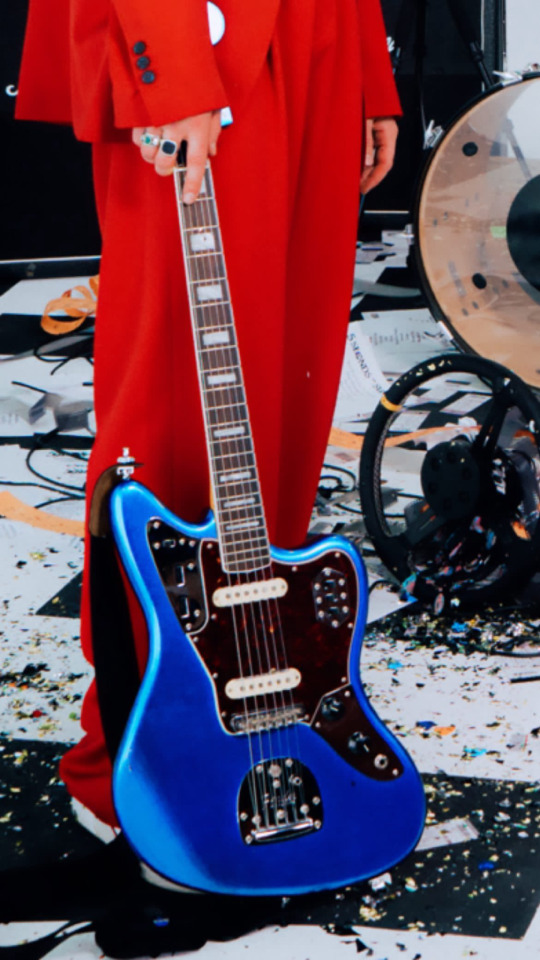

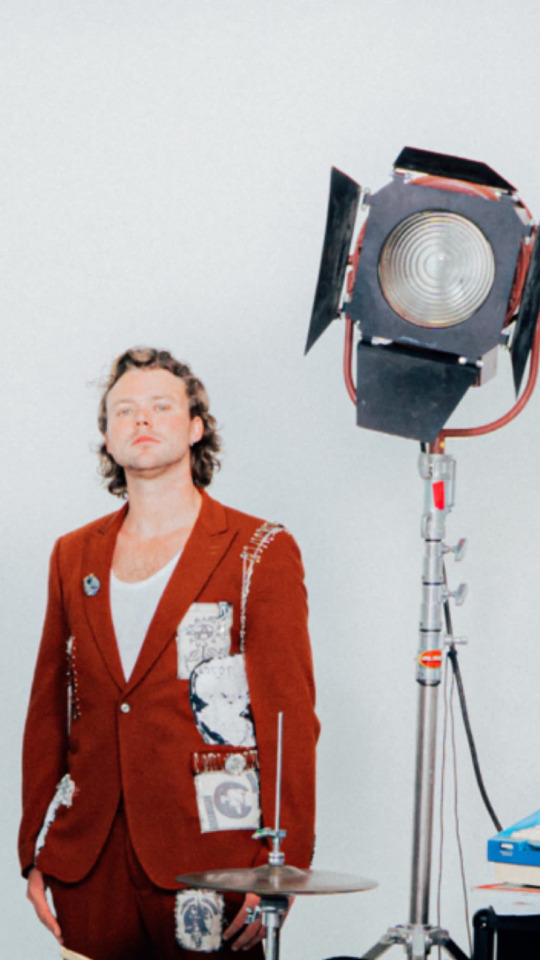


#5sos#ryan fleming photography#andy deluca#5sos photoshoot#luke hemmings#michael clifford#calum hood#ashton irwin#5sos5
7 notes
·
View notes
Text

📸: Ryan Fleming
#cake always deserves their own post#luke on his knees will always get its own post#rules are rules#5sos#5 seconds of summer#luke hemmings#calum hood#cake#calum#luke#the 5sos show tour amsterdam#the 5sos show tour#ryan fleming 2023#Instagram#ch ig#kh4f post#👹 i feel normal about so many facets of this photograph 👹#I love the art of photography 👹#such an art and photography enthusiast I'm going to think about this picture for the rest of the night#artistically#👩🏻🎨#yeah#mmm hmm#also arm#the dagger getting the spotlight it deserves
133 notes
·
View notes
Text
Conclusion
Is the line between fiction and nonfiction really as clear as the media suggests? It seems to me that if a work of fiction can evoke non-fiction, it must have the power to alert people; When fiction reaches the boundary of nonfiction, it is success. Because the fictional reality is still a kind of reality, and the life of the photography work lies in this seemingly fictional reality. Just as in Yusman's photographs, multiple real negatives are superimposed on each other like a fictional illusion. It is clear that the photographic author's life is clear, or, the reason why the work gives a realistic reading experience as if he were there is that the creator of the photography must have been there, no matter what kind of "being there" he is. Such a type of photography work, which has both fictional beauty and non-fictional quality, is of course the most ideal state. To tell the truth, I've always admired photography with life as the backdrop. For if the photography is separated from the real world, the meaning of the work will disappear. Even science fiction photography, which is almost purely fictional, is bound to abide by various theories of the universe to which it must adhere.
References
Atencia, L. (2012). Fiction, nonfiction, and deceptive photographic representation. The Journal of Aesthetics and Art Criticism, 70(1), 19-30.
Fleming, J. (2020). The Twenty-First-Century Experience: Photography and Language. Afterimage: The Journal of Media Arts and Cultural Criticism, 47(3), 14-21.
Maré, E. A. (2002). The aesthetics of ideology: the vicissitudes of monuments. South African Journal of Cultural History, 16(2), 15-24.
Ryan, M. L. (2018). Photos, Facts and Fiction: Literary Texts and Mechanical Representation. COSMO: Comparative Studies in Modernism, 13, 37-50.
Seymour, L. (2018). An Analysis of Roland Barthes's The Death of the Author. Macat Library.
0 notes
Text

Posted by Ryan Fleming on 2 July 2022
#5sos#5 seconds of summer#ryan fleming#tour photography#5sos crew#take my hand tour bts#take my hand tour#2022#2 July
8 notes
·
View notes
Photo


Ryan always captures the atmosphere perfectly.
#the best vibe#thank you ryan#concert photography#5sos#5 seconds of summer#take my hand tour#michael clifford#michael clifford b&w#michael clifford hq#on stage#tour#concert#concert photos#photographer#ryan fleming
21 notes
·
View notes